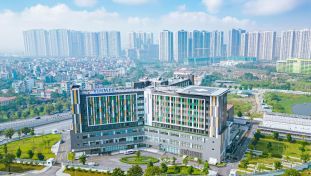Air pollution is one of the greatest environmental challenges of any urban center today. As the U.S cities expand, the management of clean, breathable air to an entire population is becoming a major challenge. Fortunately, technology is giving new hope through rapid development. Whether it is AI-enhanced surveillance or the application of smart data platforms, in the modern world, we can already see how currently available innovations can bring a quantified difference in the ways we perceptionalize and manage air quality challenges in urban environments.
Might of Proper Air Monitoring
To manage urban air quality, real-time data is necessary. It is almost impossible that city officials can learn the sources of pollution or the effects of the mitigation without accurate measurement.
Conventionally, air monitoring was conducted using big, fancy stations that had poor coverage. New air pollution solutions are, however, altering this. Urban centers are currently distributing small-scale, transportable sensors in the city neighborhoods, roads, parks, and industrial areas. These intelligent gadgets provide:
✔ Resolution of data collection
✔ Real-time reporting
✔ 24-hour surveillance
✔ Economic expansion
Such advantages enable decision-makers to realize the local drift of hyperlocal pollution and devise action plans that could potentially enhance the quality of air by a considerable margin.
The Game Changer Clean Air Technology
Among the most influential developments that have been witnessed over the last few years is an increase in the use of clean air technology. The solutions are a union of hardware, such as air sensors based on the Internet of Things, and software platforms analyzing and visualizing the data on the air quality in real-time.
The best innovations consist of:
- Analysis of data using AI: Together with data points, AI-driven algorithms can now identify patterns and forecast rises in pollution ahead of time.
- Live data and alerts: City officials and environmental agencies can view the live data and alerts on their device of choice using cloud-based dashboards.
- Connection to smart city amenities: Traffic stops, public transport, and heating, ventilation, and air conditioning may be adapted in real-time to pollution rates.
To take an example, New York City is already heading in that direction, introducing clean air tech that does not just measure the air pollution, but stops it as well by introducing advanced traffic control and using green energy.
Cities and Citizen Benefits
Implementation of such leading technology in air pollution has varying practical advantages:
- Better population health: Early alerts on the bad air quality ensure that the vulnerable members of society do not access it.
- Greater efficiency in policymaking: Evidence-based knowledge can be used to make more efficient regulations and allocate more resources.
- Increased community awareness: Scores of people now have appropriate access to air quality data, which helps them lobby to create cleaner communities.
- Corporate responsibility: At industry levels, they can monitor their emissions and minimize them to become compliant and sustainable.
Looking Ahead
Because the problem of air quality progresses, our mechanisms of fighting this challenge must progress as well. Air pollution control technology of the future is more intelligent, more networked, and more proactive. The cities in the U.S. are doing something more than responding to pollution through embracing technology; they are avoiding it.
Whether through sensor networks or AI-predicted analytics, it also appears that technology in the environmental quality monitoring realm is becoming crucial to make such environments healthier. And the more accessible these innovations will be, the brighter the future of communities nationwide will be.
© 2025 ScienceTimes.com All rights reserved. Do not reproduce without permission. The window to the world of Science Times.













